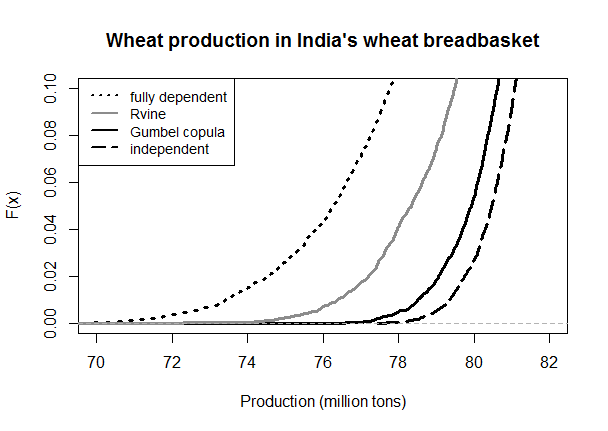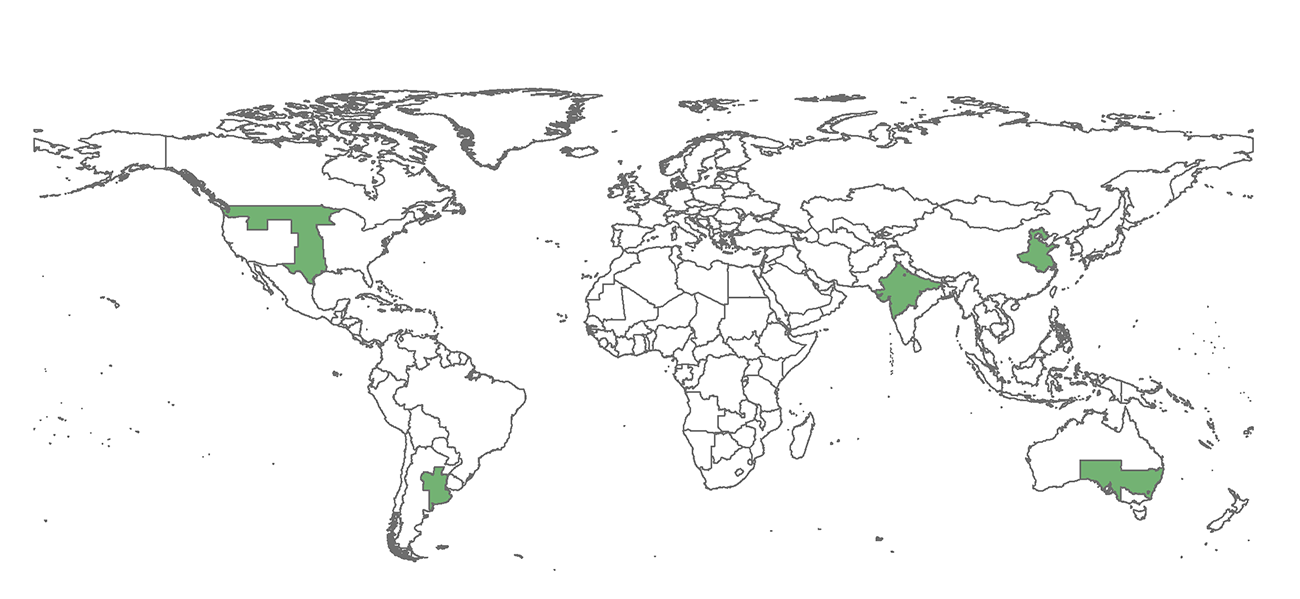
Global breadbaskets: Possibilities for risk pooling
Simultaneous crop losses in different parts of the world can pose a serious risk to global food security. However, little is currently known about the spatial dependency of crop yield losses between global breadbaskets. In a recent study, IIASA researchers focused on wheat yields to identify systemic risk within specific regions.
The term breadbasket is commonly used to describe an area with highly arable land that produces food–particularly grains–to feed the people of its own country, as well as for export to other places. The increasing global interconnectivity and mutual interdependence of economic- and ecological systems can amplify the vulnerability and risk of disasters. The global food system is a good example of the effects of this increased interdependence and the possibility of systemic risk.
Owing to the globalization of the grain market, a food shock due to drought, or other natural disasters in one or more major food producing areas, can lead to a significant increase in world food prices, and might threaten food security, particularly in poorer countries. This especially applies in the case of extreme events, where one or more breadbaskets are experiencing far below average yields.
Without the necessary information, risk management approaches cannot be applied and vulnerability to extremes may remain high, or even increase around the world in the future. The Risk and Resilience Program tackled both these issues from an empirical perspective, focusing on wheat yield.
The researchers estimated the interdependencies between historically observed wheat yield deviations in five breadbaskets: Argentina, Australia, China, India, and the United States. They made use of copula approaches to describe the dependence between variables. In doing so, they were able to attach probabilities to interregional, as well as global yield losses. To increase the robustness of their results, they applied three different methods for constructing multivariate copulas, namely R-vine copulas, ordered coupling using a minimax approach and Gaussian copulas, and hierarchical structuring.
In the case of the Indian breadbasket with today’s average wheat, the use of multiple structuring methods revealed differing results. With a probability of 5% or a 20-year return period, for example, the production in the Indian breadbaskets will be 76.1 million tons if the breadbaskets were fully dependent, 78.5 million tons using the R-vine approach, 79.1 million tons applying a structured copula, and 80.5 million tons if correlations between the states are not considered.
These results show that if correlations between wheat yields within the breadbaskets are not considered in risk analysis, the risk of production losses are underestimated. Using the example above, that would imply that the risk of a production of 80.5 million tons is more than three times higher, assuming that all states are independent compared to the R-vine curve. This is important for crop insurance schemes and agricultural policy decisions.

Production curves up to the lower 10th percentile of the production distribution for the Indian breadbasket comparing with minimax structured copula using Gaussian copulas and an R-vine with the independent and fully dependent case with today’s average production levels.
On a global scale, however, notwithstanding evidence of global climatic teleconnections that may influence crop production, the researchers demonstrated that wheat production losses are independent between global breadbaskets. This strengthens the case for interregional risk pooling strategies, which could in turn decrease the post-disaster liabilities of governments and international donors.
References
[1] Gaupp F, Pflug G, Hochrainer-Stigler S, Hall J, & Dadson S (2017). Dependency of Crop Production between Global Breadbaskets: A Copula Approach for the Assessment of Global and Regional Risk Pools. Risk Analysis 37 (11): 2212-2228
Further information
Other highlights
Top image © SasinTipchai | Shutterstock





You must be logged in to post a comment.